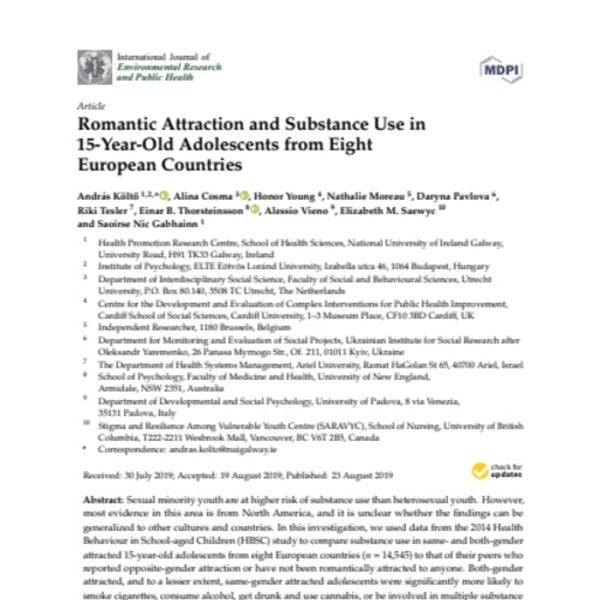Attirance romantique et usage de substances chez des adolescents de 15 ans de 8 pays européens
Cette étude multinationale indique que les jeunes de minorité sexuelle sont plus susceptibles à l’usage de substances que leurs pairs, ce qui souligne la nécessité pour des approches adaptées à leurs besoins. Pour en savoir plus, en Anglais, veuillez lire les informations ci-dessous.
By András Költő, Alina Cosma, Honor Young, Nathalie Moreau, Daryna Pavlova, Riki Tesler, Einar B. Thorsteinsson, Alessio Vieno, Elizabeth M. Saewyc and Saoirse Nic Gabhainn
Sexual minority youth are at higher risk of substance use than heterosexual youth. However, most evidence in this area is from North America, and it is unclear whether the findings can be generalized to other cultures and countries. In this investigation, we used data from the 2014 Health Behaviour in School-aged Children (HBSC) study to compare substance use in same- and both-gender attracted 15-year-old adolescents from eight European countries (n = 14,545) to that of their peers who reported opposite-gender attraction or have not been romantically attracted to anyone. Both-gender attracted, and to a lesser extent, same-gender attracted adolescents were significantly more likely to smoke cigarettes, consume alcohol, get drunk and use cannabis, or be involved in multiple substance use in the last 30 days compared to their opposite-gender attracted peers. Those adolescents who have not been in love had significantly lower odds for substance use than all other youth. The pattern of results remained the same after adjusting for country, gender and family affluence. These findings are compatible with the minority stress and romantic stress theories. They suggest that sexual minority stigma (and love on its own) may contribute to higher substance use among adolescents in European countries.
